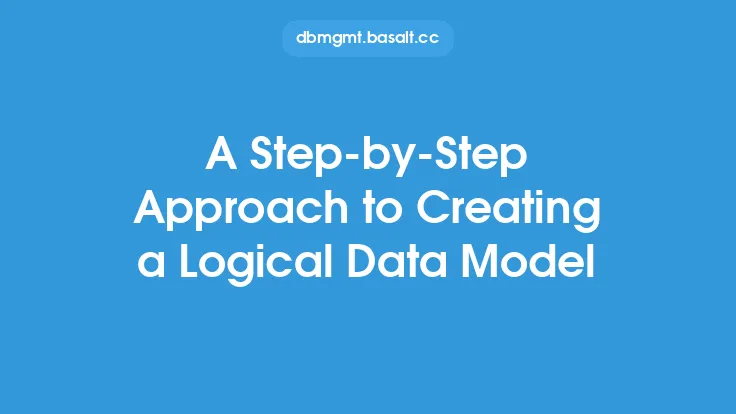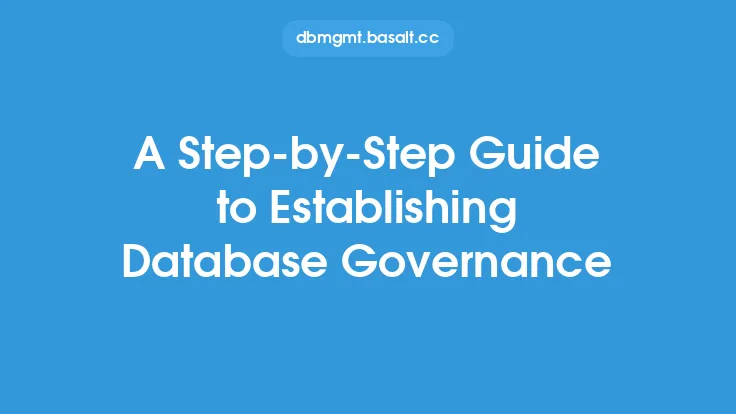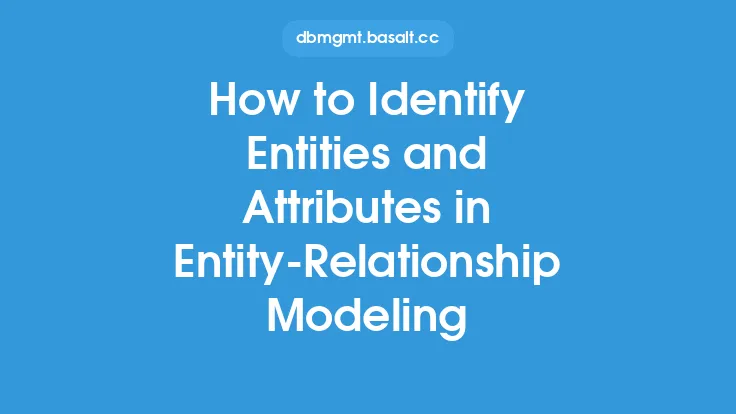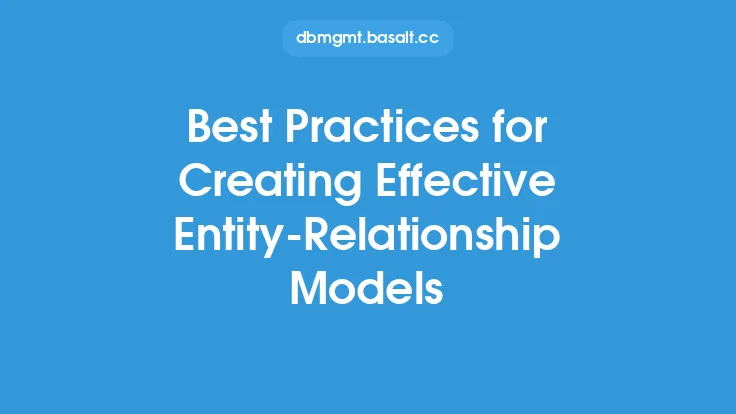Creating an entity-relationship model is a crucial step in the database design process, as it allows designers to visualize and define the structure of a database. The entity-relationship model is a conceptual representation of the data, and it provides a foundation for the physical database design. In this article, we will walk through the steps to create an entity-relationship model, providing a detailed and informative guide for database designers.
Introduction to Entity-Relationship Modeling
Entity-relationship modeling is a technique used to design and represent the structure of a database. It involves identifying the entities, attributes, and relationships that exist within the data, and using these components to create a conceptual model of the database. The entity-relationship model is typically represented using an entity-relationship diagram (ERD), which provides a visual representation of the database structure.
Identifying Entities
The first step in creating an entity-relationship model is to identify the entities that exist within the data. Entities are objects or concepts that have independent existence and can be described with attributes. Examples of entities might include customers, orders, products, and employees. To identify entities, designers should consider the key concepts and objects that are relevant to the database, and determine which of these concepts are entities.
Identifying Attributes
Once the entities have been identified, the next step is to identify the attributes that describe each entity. Attributes are the characteristics or properties of an entity that provide more information about it. For example, a customer entity might have attributes such as name, address, phone number, and email. To identify attributes, designers should consider what information is relevant to each entity, and what characteristics or properties are necessary to describe it.
Identifying Relationships
After identifying the entities and attributes, the next step is to identify the relationships that exist between the entities. Relationships are the connections or associations between entities, and they can be classified into three main types: one-to-one, one-to-many, and many-to-many. For example, a customer entity might have a one-to-many relationship with an order entity, as a customer can place multiple orders. To identify relationships, designers should consider how the entities interact with each other, and what connections or associations exist between them.
Defining Entity Types
Entity types are categories of entities that share common characteristics or properties. For example, a customer entity might be classified as a person or an organization, depending on the type of customer. Defining entity types helps to provide more information about the entities and their attributes, and it can also help to identify relationships between entities.
Defining Relationship Types
Relationship types are categories of relationships that exist between entities. For example, a one-to-one relationship might be classified as a mandatory or optional relationship, depending on whether the relationship is required or not. Defining relationship types helps to provide more information about the relationships between entities, and it can also help to identify the cardinality and ordinality of the relationships.
Defining Cardinality and Ordinality
Cardinality refers to the number of relationships that exist between entities, while ordinality refers to the order or sequence of the relationships. For example, a customer entity might have a one-to-many relationship with an order entity, with a cardinality of 1:N and an ordinality of mandatory. Defining cardinality and ordinality helps to provide more information about the relationships between entities, and it can also help to identify the constraints and rules that govern the relationships.
Creating the Entity-Relationship Diagram
The final step in creating an entity-relationship model is to create the entity-relationship diagram (ERD). The ERD is a visual representation of the database structure, and it provides a graphical representation of the entities, attributes, and relationships that exist within the data. The ERD should include the entities, attributes, and relationships that have been identified, as well as the cardinality and ordinality of the relationships.
Validating the Entity-Relationship Model
Once the entity-relationship model has been created, it is essential to validate it to ensure that it accurately represents the database structure. Validation involves checking the model against the requirements and constraints of the database, and ensuring that it meets the needs of the users. Validation can be performed using various techniques, such as data modeling, data normalization, and data denormalization.
Refining the Entity-Relationship Model
After validating the entity-relationship model, it may be necessary to refine it to ensure that it accurately represents the database structure. Refining the model involves making adjustments to the entities, attributes, and relationships to ensure that they are accurate and consistent. Refining the model can also involve adding or removing entities, attributes, and relationships, as well as modifying the cardinality and ordinality of the relationships.
Implementing the Entity-Relationship Model
The final step in creating an entity-relationship model is to implement it in the database. Implementation involves creating the physical database structure, including the tables, indexes, and relationships. The implementation should be based on the entity-relationship model, and it should ensure that the database structure is consistent with the model. Implementation can be performed using various database management systems, such as relational databases, object-oriented databases, or NoSQL databases.
Conclusion
Creating an entity-relationship model is a crucial step in the database design process, as it allows designers to visualize and define the structure of a database. The entity-relationship model provides a foundation for the physical database design, and it ensures that the database structure is consistent and accurate. By following the steps outlined in this article, designers can create an effective entity-relationship model that meets the needs of the users and ensures the integrity and consistency of the data.





